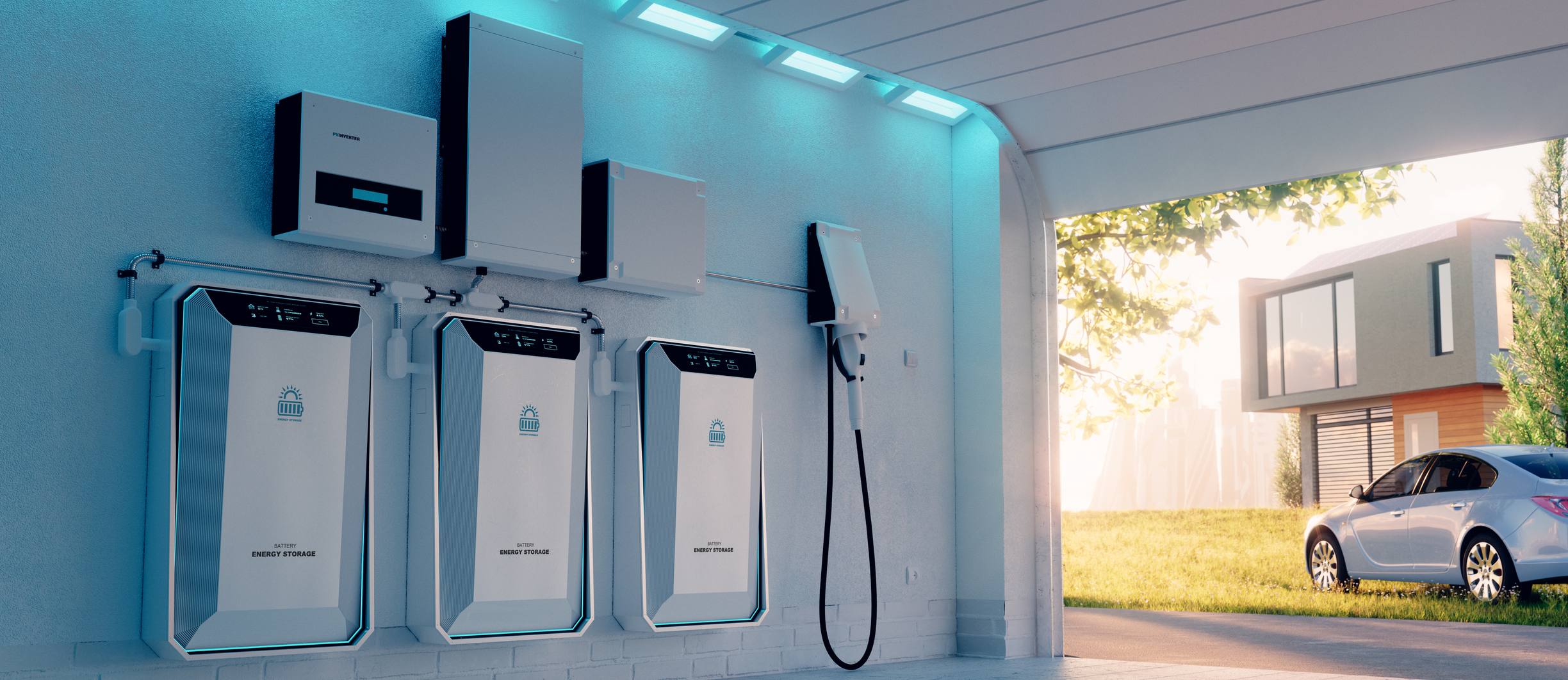Out Now
The Aussie Issue
Current Issue
The Aussie Issue
DEC 25 - JAN 26

Solar panel tech has evolved and prices have come down considerably – but what about batteries? After all, they’re part of the jigsaw, right?
Just as solar panel technology is evolving and changing [insert link to solar story], so too is battery technology. Which is good news, because if we’re ever going to use solar production to its maximum potential, we need to be able to store it cost-effectively.
“Battery technology is constantly evolving and improving, with advancements being made in areas such as energy density, lifespan, safety, and cost-effectiveness,” says Richard Vargas, Founder and Chairman of United Solar Energy.
“The cost of batteries has been decreasing steadily over the past decade, driven by advancements in technology and economies of scale as more batteries are produced. As a result, batteries have become increasingly affordable for households, and we can expect this trend to continue in the future.”
However, whether or not batteries will become affordable for the average household in the near future depends on how you define ‘affordable’.
“The cost of batteries varies widely depending on the type of battery, its capacity, and its intended use,” says Richard.
“For example, the cost of a small, rechargeable AA battery is relatively low and has been affordable for households for many years. On the other hand, larger batteries used for energy storage can be much more expensive.
“Overall, it’s likely that the cost of batteries will continue to decrease as technology improves and more batteries are produced. As a result, we can expect batteries to become increasingly affordable for households over time. However, it’s difficult to predict exactly when this will happen or how affordable batteries will become.”
While the cost of batteries has decreased over the past decade, over more recent years that downward trajectory has slowed somewhat – and one of the reasons is… electric vehicles, says Stefan Jarnason, CEO of Solar Analytics.
“Battery cost has come down probably by a factor of two over the past decade, but in the past four years, the price has barely changed at all. In fact, it’s the same price today as it was in 2018 – and the reason for that is because of supply and demand.
“Anyone who can manufacture a battery is selling them to an electric vehicle manufacturer.
“All of the supply chains are still building up – there are currently dozens of gigafactories being built around the world. At some point, just as happened with solar panels, the price of batteries will suddenly drop precipitously because the supply will be able to keep up with demand.”
In terms of advancements in battery technology, says Richard, three things are particularly prevalent.
Solid-state batteries are a new type of battery that use a solid electrolyte instead of a liquid one, which makes them safer and more durable than traditional lithium-ion batteries. They also have the potential to hold more energy and charge faster.
Flow batteries are a type of rechargeable battery that store energy in chemical solutions housed in separate tanks. They have the potential to store much larger amounts of energy than traditional batteries, making them ideal for use in large-scale energy storage applications.
Lithium-sulphur batteries are a type of rechargeable battery that use sulphur as the cathode instead of traditional lithium-ion battery cathodes. They have the potential to hold up to five times as much energy as traditional lithium-ion batteries.
It seems that batteries are on the brink of catching up with solar panel technology – and, as long as the supply can meet demand, prices could plummet sooner rather than later, which could change domestic and industrial power supply, and grid demand, considerably.
Keep up to date with our latest news and competitions by subscribing to our regular newsletter.

Issue 189
OCT - NOV 2025

Issue 188
AUG - SEPT 2025

Issue 187
JUN - JUL 2025

Issue 186
APR - MAY 2025

Issue 185
FEB - MAR 2025

Issue 184
DEC 2024 - JAN 2025

Issue 183
OCT - NOV 2024

Issue 182
AUG - SEPT 2024

Issue 181
JUN - JUL 2024

Issue 180
APR - MAY 2024

Issue 179
FEB - MARCH 2024

Issue 178
DEC 2023 - JAN 2024

Issue 177
OCT - NOV 2023

Issue 176
AUG - SEPT 2023

Issue 175
JUN - JUL 2023

Issue 174
APR - MAY 2023

Issue 173
FEB - MAR 2023

Issue 172
DEC 2022 - JAN 2023

Issue 171
OCT - NOV 2022

Issue 170
AUG - SEPT 2022

Issue 169
JUN - JUL 2022

Issue 168
APR - MAY 2022

Issue 167
FEB - MAR 2022

Issue 166
DEC 2021 - JAN 2022

Issue 165
OCT - NOV 2021

Issue 164
AUG - SEPT 2021

Issue 163
JUN - JUL 2021

Issue 162
APR - MAY 2021

Issue 161
FEB - MAR 2021

Issue 160
DEC 2020 - JAN 2021

Issue 159
OCT - NOV 2020

Issue 158
AUG - SEPT 2020

Issue 157
JUN - JUL 2022

Issue 156
APR - MAY 2020

Issue 155
FEB - MAR 2020

Issue 154
DEC 2019 - JAN 2020

Issue 153
OCT - NOV 2019

Issue 152
AUG - SEPT 2019

Issue 151
JUN - JUL 2019

Issue 150
APR - MAY 2019

Issue 149
FEB - MAR 2019

Issue 148
DEC 2018 - JAN 2019

Issue 147
OCT - NOV 2018

Issue 146
AUG - SEPT 2018

Issue 145
JUN - JUL 2018

Issue 144
APR - MAY 2018

Issue 143
FEB - MAR 2018

Issue 142
DEC 2016 - JAN 2017

Issue 141
OCT- NOV 2017

Issue 140
AUG - SEPT 2017

Issue 139
JUN - JUL 2017

Issue 138
APR - MAY 2017

Issue 137
FEB - MAR 2017

Issue 136
DEC 2016 - JAN 2017

Issue 135
OCT - NOV 2017

Issue 134
AUG - SEPT 2016

Issue 133
JUN - JUL 2016

Issue 132
APR - MAY 2016

Issue 131
FEB - MAR 2016

Issue 130
DEC 2015 - JAN 2016

Issue 129
OCT - NOV 2015

Issue 128
AUG - SEPT 2015

Issue 127
JUN - JUL 2015

Issue 125
APR - MAY 2015

Issue 125
FEB - MAR 2015

Issue 124
DEC 2014 - JAN 2015

Issue 123
OCT - NOV 2014

Issue 122
AUG - SEPT 2014

Issue 121
JUN - JUL 2014

Issue 120
APR - MAY 2014

Issue 119
FEB - MAR 2014

Issue 118
DEC 2013 - JAN 2014

Issue 117
OCT - NOV 2013

Issue 116
AUG - SEPT 2013

Comments (1)
Write a Comment